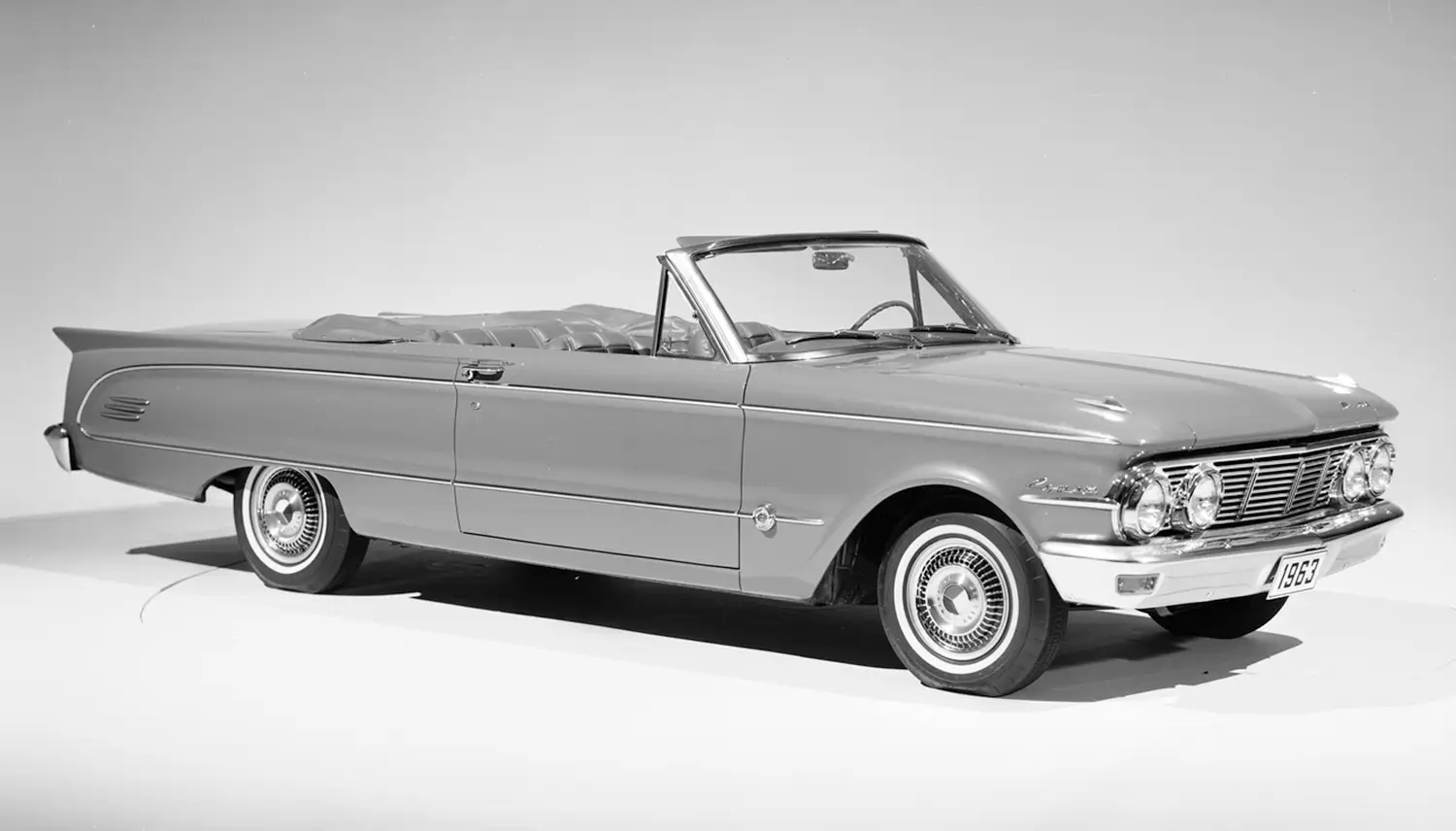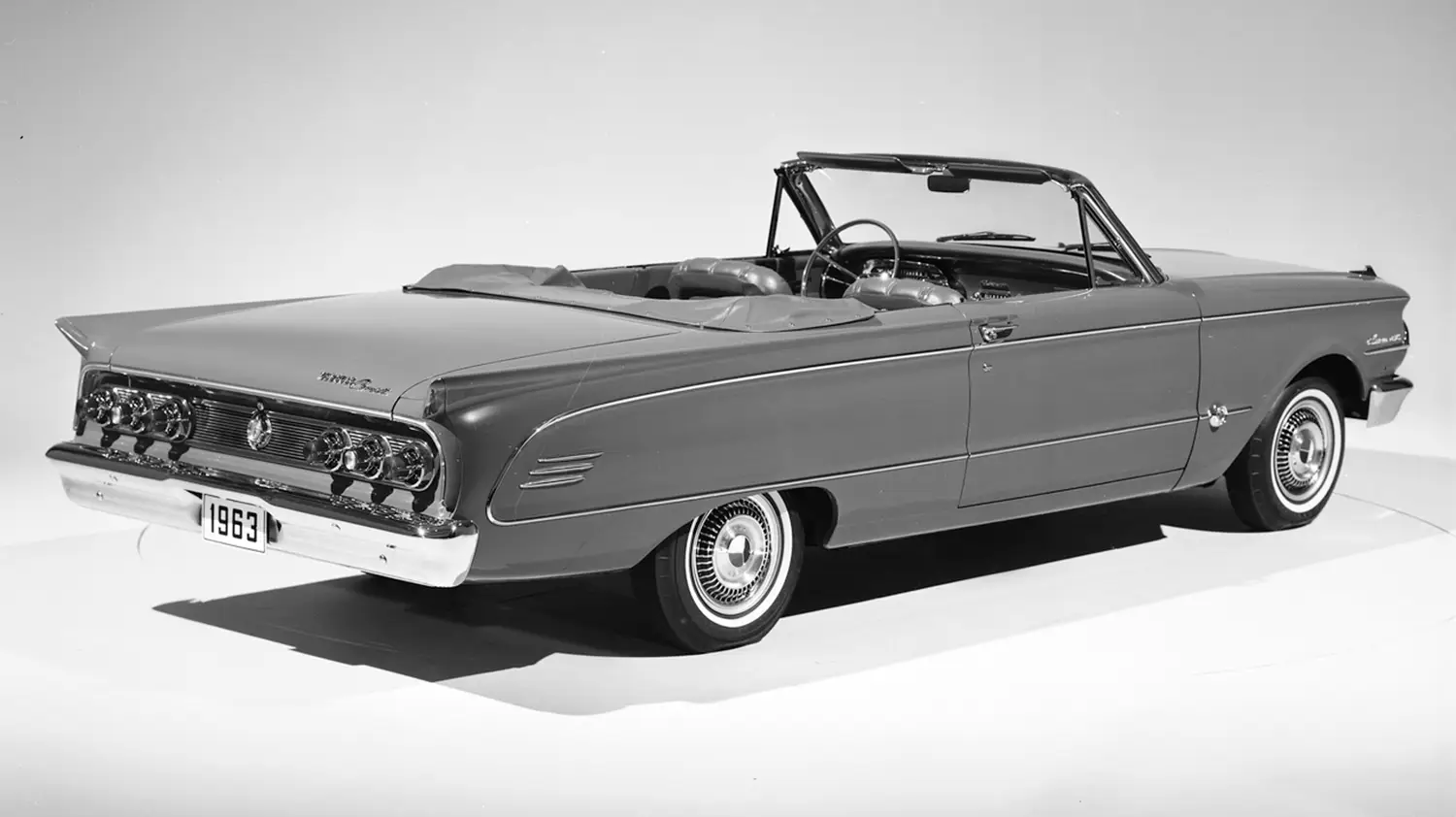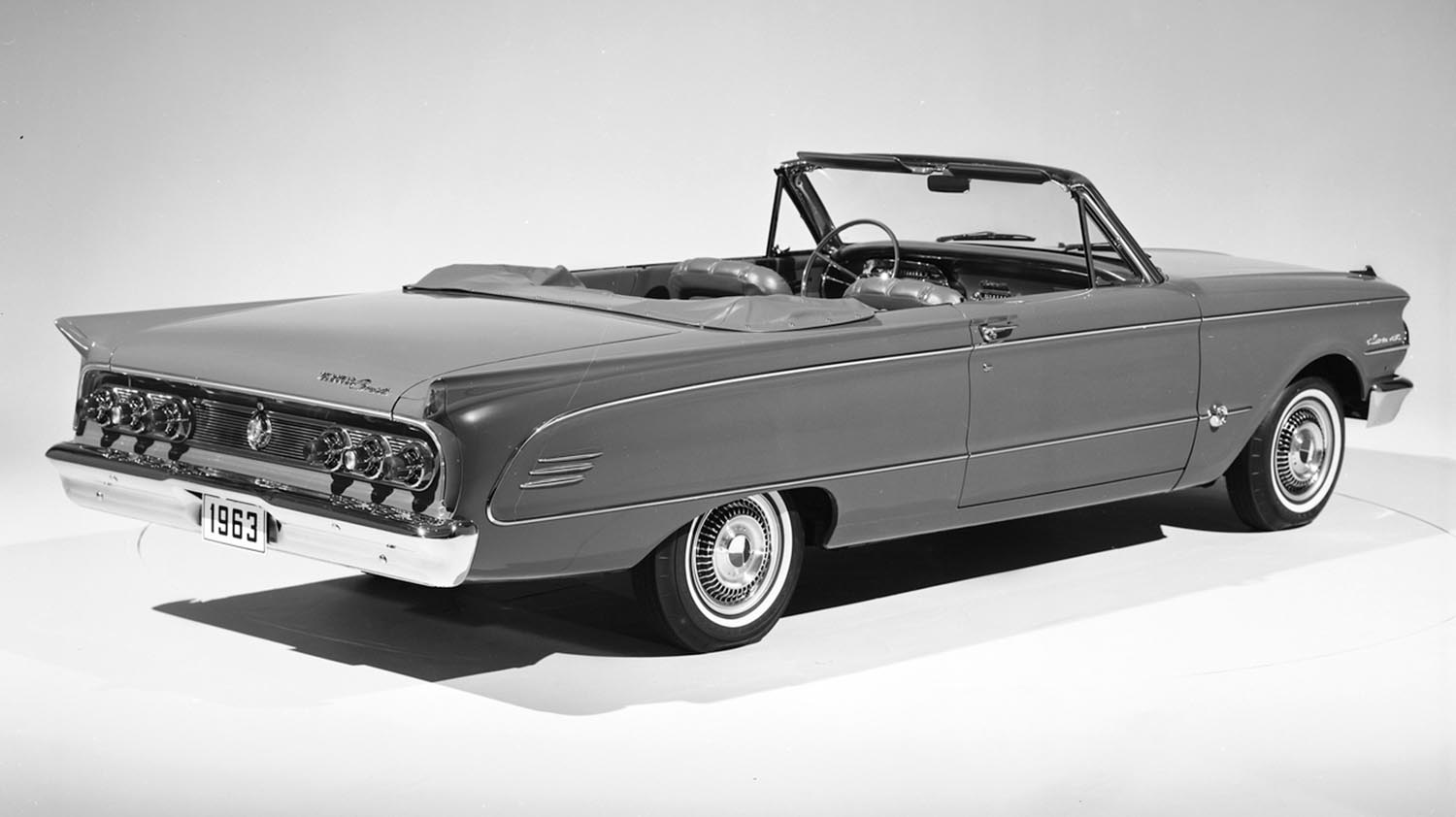
The 1963 Mercury Comet S-22 Convertible stands as one of Mercury’s most charming expressions of early 1960s motoring. Combining compact proportions with elegant design and a touch of sportiness, it became a defining model in the brand’s journey toward youthful, performance-inspired appeal.
Design and Model Evolution
Introduced as the top trim of the Comet lineup, the S-22 added a more sophisticated and sporty flair to Mercury’s compact range. While the base Comet focused on practicality, the S-22 brought premium interior touches, chrome detailing, and unique styling cues that gave it a more upscale feel. Its convertible form amplified the car’s appeal, offering open-air driving in a sleek, well-proportioned package.
Exterior and Styling Highlights
The 1963 Comet S-22 Convertible featured smooth, elongated lines and subtle fins that reflected the aerodynamic styling trends of its era. Dual round taillights and tasteful chrome accents gave the rear a distinctive identity, while the wide grille and clean body panels projected understated confidence. With the top down, it looked every bit the stylish cruiser that embodied early-’60s optimism.
Interior Refinement
Inside, the S-22 offered thoughtful upgrades over the standard Comet. Bucket seats replaced the conventional bench layout, while a center console and special badging reinforced its sporty character. The dashboard design was simple but functional, mirroring Mercury’s balance between practicality and mid-century sophistication.
Power and Performance
Performance was a central part of the S-22’s charm. Standard power came from a reliable 170-cubic-inch inline-six engine producing around 101 horsepower, while the optional 260-cubic-inch V8 delivered roughly 164 horsepower. Paired with either a three-speed manual or optional automatic transmission, the Comet S-22 offered brisk acceleration for its class and smooth highway cruising.
Engineering and Driving Feel
Mercury refined the suspension setup for the 1963 model year, improving stability and ride comfort. Despite its compact footprint, the Comet S-22 delivered a confident and well-balanced drive. Its light steering and nimble handling made it ideal for both city streets and long weekend trips, qualities that helped Mercury attract younger buyers.
Legacy and Historical Importance
The 1963 Mercury Comet S-22 Convertible holds a special place in Mercury’s history as the brand’s first real attempt at blending luxury with performance in the compact segment. It foreshadowed Mercury’s future sporty offerings, influencing models like the Cyclone and Cougar. More importantly, it showed that American compacts could be both stylish and engaging to drive.
Summary
The 1963 Mercury Comet S-22 Convertible remains a cherished symbol of Mercury’s innovation during the early 1960s. It captured the decade’s spirit with its open-air freedom, refined design, and capable performance. Decades later, it continues to represent the moment when Mercury proved that small cars could still deliver big personality.
Disclaimer: Content on this site is for informational purposes only. Vehicle specs, pricing, and availability may change. Always verify details with official sources before making decisions. Opinions are those of the authors.
Source: Ford Heritage Vault

